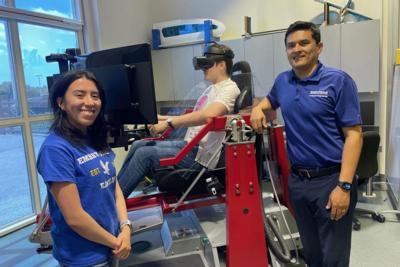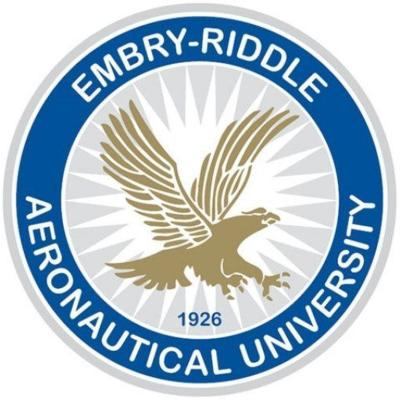School Highlights AI-Based LOC Research
A raft of Embry-Riddle research projects have been funded by seed grants from the Boeing Center for Aviation & Aerospace Safety, kicking off a flurry of activity at the Florida college.

The school highlighted one project 'using artificial intelligence to help model and predict in-flight loss-of-control incidents', citing its use to reduce fatalities in commercial aviation. Additional projects included "Open-Source Validation and Verification Framework for AI-Controlled Aerial Vehicles“, "3D Printing of Continuous Carbon Fiber Composites With Programmable Thermal Behaviors: A Proactive Safety Design for Advanced Thermal Management", "Robust Automatic Speech Recognition for Aviation Applications", and "Fabrication of Copper Lithium-Ion Battery Case With Integrated Cooling Channels Using Binder Jetting Additive Manufacturing". Projects got seed grants of $20,000 a piece from the Boeing Center for Aviation and Aerospace Safety at Embry?Riddle and Embry?Riddle Daytona Beach College of Engineering. All in all, the grants were a new addition to the field of scholarship there, drawing on $20,000 from the Boeing Center and $80,000 from the College of Engineering.
Apparently the most accessible team was the AI-study project, which gave an insight into where the grant money goes while helping advance the field in general. The team behind the work took a moment to show how far they've gotten in their studies so far, using AI (a hot commodity in any tech space at the moment) to evaluate the utility and gauge the safety of pilot reactions to an in-flight issue. Using flight simulators to gather data from model pilots, the team is building a database for an AI to learn from, and ultimately predict pilot behavior before it happens.
“Many accidents happen due to Pilot-Induced Oscillations (PIO),” said Dr. Hever Moncayo, professor and graduate program coordinator overseeing the project. “This project looks at how we can monitor pilot behavior before getting into those conditions, and, if there is a mechanism that can monitor pilot behavior, then we can predict what the pilot should do to avoid PIOs."

That's just an example of one of the 5 teams given a seed grants, and Moncayo has already mapped the way forward. He said that the $20,000 in funding is good to get preliminary results, which kick start the cycle of funding by giving him (hopefully) promising data to hunt grants from bigger fish like the National Science Foundation and NASA. Along the way, Embry's engineering students get to cut their teeth on work that could ultimately affect the industry, and build skills along the way. The College of Engineering also gets a status bump from successful projects, much desired in order to prove the investment in their research campus was well-spent. Embry-Riddle wants to raise its profile among non-aviators, too, and high-profile engineering projects help to get the school on the map for those who can't tell a turboprop from a turbocharger.
"Our intent with this program is to incentivize, support and catalyze groundbreaking work that will 'move the needle' and have a direct, positive impact on aviation safety,” said Dr. Jim Gregory, dean of the College of Engineering at the Daytona Beach Campus. “Our expectation is that these funded projects will lead to follow-on proposals for extramural funding."
 Aero-News: Quote of the Day (12.07.25)
Aero-News: Quote of the Day (12.07.25) ANN's Daily Aero-Linx (12.07.25)
ANN's Daily Aero-Linx (12.07.25) NTSB Final Report: Lafferty Jack Sea Rey
NTSB Final Report: Lafferty Jack Sea Rey Classic Aero-TV: The B29 SuperFortress Doc - History in Flight
Classic Aero-TV: The B29 SuperFortress Doc - History in Flight Airborne 12.08.25: Samaritans Purse Hijack, FAA Med Relief, China Rocket Fail
Airborne 12.08.25: Samaritans Purse Hijack, FAA Med Relief, China Rocket Fail




